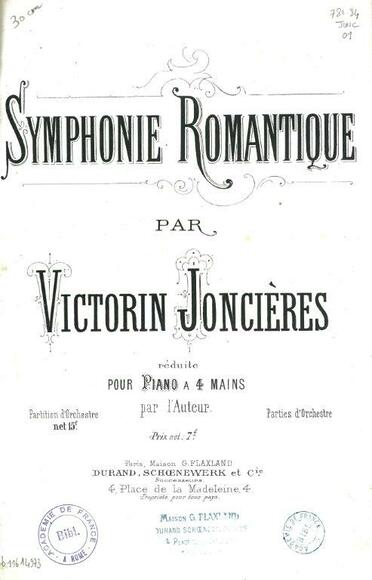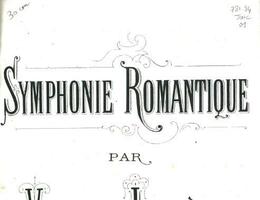Symphonie romantique

Andante. Allegro – Andante sostenuto – Agitato – Finale
Performed for the first time at the Concert National on 9 March 1873, the Symphonie romantique by Victorin Joncières was a huge success. The critics praised the Wagnerian influences of a work by a composer known for his operas, but who had not yet distinguished himself as a writer of orchestral music. The symphony, which avoids all categorisation, skilfully blends French and German styles. Its sense of drama, particularly apparent in the climaxes that seem to refer to events of great import, is combined with a tireless quest for new acoustic effects. This situates it in the tradition of the great programme works of the Romantic period, evoking as it does from time to time the genre of the symphonic poem created by Liszt. The first movement introduces a dotted motif which moves from section to section and creates a prevailing melancholy atmosphere throughout the Andante, which is soon dispelled by a passionate Allegro full of chromatic harmonies and powerful tutti. The second movement develops a Schumannian lyricism sustained by extremely expressive motifs which, after being passed from the strings to the woodwind, unite the two sections. The Agitato is the most original part of the symphony: bringing back the chromaticism of the first movement, it reveals a mastery of instrumentation and narration unrivalled by the greatest opera composers of the time. The final movement, an extensive chorale reminiscent of the “Pilgrim’s Chorus” from Wagner’s Tannhäuser (to which Joncières may be paying homage), sets up an impressive agogic movement— the clarinets, bassoons and horns which are initially heard alone are overlaid by the other wind sections, followed by the violins. This delightful work, which served the composer as a proving ground for orchestral writing and was consigned to oblivion until its recent revival, has much to offer with its polished orchestration, expressive power and strokes of originality. It clearly marks a break with French models by Onslow, Reber, David or Gounod.

